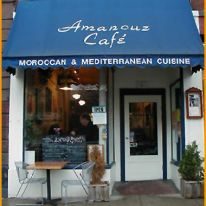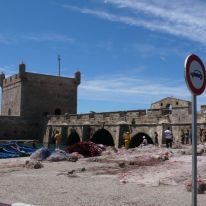The hosts clap their hands and you sit at the table taking in the light scents of mint, cumin and saffron and a distant aroma of pomegranate glaze. In front of you is a dish of Moroccan lamb with a garbanzo bean mash and then a series of courses follow. The host goes around with a dish of rose water and for a ritual hand cleansing before the meal. The meal is served at a low table with a bright colored cloth blanketing the wood. You sit patiently on the floor cushion ready to dig in.
OK so, it is easy to imagine this delectable feast, but not so easy to transport yourself to the table for this precise and artistically prepared meal. If you are headed to Morocco, or have an interest in Moroccan cuisine, you might like to test out or reenact a traditional meal of your own.

Some things to know:
- In some cases it takes a host/hostess anywhere up to a week to prepare a meal for an honored guest.
- Most households in Morocco make their own breads.
- Preserved lemons add a salty, distinctive lemon flavor to many Moroccan dishes.
- Tagine refers to both a ceramic piece of cookware and the stew-like dish it is prepared in.
- Berbers, the first inhabitants of Morocco, use local ingredients, such as olives, figs, and dates, to prepare lamb and poultry stews.
Here are some Moroccan recipes that I found:






